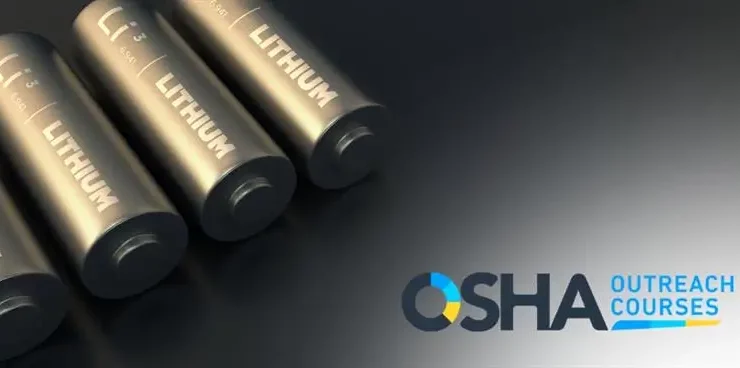OSHA’s Power: Protecting Workers in the United States
Introduction
The Occupational Safety and Health Administration (OSHA) is a legal agency in the United States responsible for ensuring employers maintain a safe and healthy work environment. Established in 1970 under the Occupational Safety and Health Act, OSHA has been vital in reducing workplace hazards and promoting workplace and worker safety. But how much power does OSHA have? In this blog, we will explore OSHA’s enforcement powers, rulemaking authority, and the role it plays in protecting workers nationwide.
OSHA’s Enforcement Powers
OSHA has enforcement powers to ensure employers comply with the established safety and health standards. For instance, if you have not completed your OSHA 30-Hour course, you and your workplace can be subjected to heavy OSHA fines because you are not meeting the training requirements. These powers include conducting workplace inspections, issuing citations, and fining employers for violations. The following are some key aspects of OSHA’s enforcement powers:
- Workplace Inspections: OSHA conducts workplace inspections randomly, in response to reported hazards, or after a severe injury or fatality. Inspections are carried out by OSHA’s compliance safety and health officers (CSHOs), who are trained in various safety and health disciplines.
- Citations and Penalties: If an inspection reveals violations of OSHA standards, the agency may issue citations and propose penalties. Violations can be classified into several categories, including “serious,” “other-than-serious,” “willful,” and “repeated.” Penalties range from a few thousand dollars to hundreds of thousands of dollars, depending on the severity and frequency of the violations.
- Abatement: Employers are required to correct cited violations within a specified timeframe, known as the abatement period. OSHA may grant extensions if the employer demonstrates a good faith effort to comply.
- Appeals Process: Employers have the right to contest citations, penalties, or abatement deadlines. The appeals process involves informal conferences with OSHA representatives, followed by formal hearings before the Occupational Safety and Health Review Commission (OSHRC) if necessary.
- Enforcement Programs: OSHA has several targeted enforcement programs, such as the Severe Violator Enforcement Program (SVEP) and the National Emphasis Program (NEP), focusing on high-risk industries, repeat offenders, and significant hazards.
OSHA’s Rulemaking Authority
OSHA has the power to establish and update safety and health standards to protect workers from recognized hazards. The rulemaking process consists of several steps:
- Preliminary Rulemaking: OSHA identifies a workplace hazard that needs to be addressed and conducts research to understand its scope and potential solutions.
- Proposal Stage: OSHA develops a proposed rule published in the Federal Register for public review and comment.
- Public Hearings and Comment Period: OSHA may hold public hearings to gather additional input and allow stakeholders to voice their opinions on the proposed rule.
- Final Rule: After considering public input, OSHA issues a final rule published in the Federal Register and becomes enforceable on a specified effective date.
OSHA’s Role in Protecting Workers
In addition to its enforcement and rulemaking powers, OSHA plays a critical role in protecting workers through various programs and initiatives:
- Education and Training: OSHA provides training and educational materials to help employers and employees understand their rights and responsibilities under the OSH Act. This includes the development of guidelines, fact sheets, and OSHA training courses, which are mainly OSHA 10-Hour for beginners and OSHA 30-Hour for workers in supervisory roles.
- Consultation Services: OSHA offers free on-site consultation services to help small businesses identify and correct workplace hazards and improve their safety and health management systems.
- Whistleblower Protection: OSHA enforces whistleblower protection laws to ensure employees can report safety and health concerns without fear of retaliation.
- Outreach and Partnerships: OSHA works with various stakeholders, including labor unions, industry associations, and community organizations, to promote workplace safety and health. These partnerships may involve developing best practices, sharing information, and cooperative efforts to address specific hazards.
- Research and Statistics: OSHA conducts and supports research on workplace hazards and effective safety and health interventions. The agency also collects and analyzes data on work-related injuries, illnesses, and fatalities, which informs its enforcement efforts and rulemaking priorities.
- Emergency Preparedness and Response: OSHA plays a crucial role in helping employers and workers prepare for and respond to emergencies, such as natural disasters, pandemics, and chemical releases. The agency develops guidance, provides technical assistance, and coordinates with other federal agencies to ensure worker safety during emergencies.
Conclusion
OSHA’s powers are instrumental in protecting the safety and health of workers in the United States. With enforcement powers to conduct inspections, issue citations, and impose fines, OSHA ensures that employers maintain safe work environments. Additionally, the agency’s rulemaking authority allows it to establish and update safety and health standards in response to emerging hazards.
Beyond enforcement and rulemaking, OSHA plays a multifaceted role in promoting workplace safety through education, training, consultation services, whistleblower protection, outreach partnerships, research, and emergency preparedness. As a result, OSHA has made significant strides in reducing workplace injuries, illnesses, and fatalities since its inception, continuing to prioritize the well-being of American workers.






